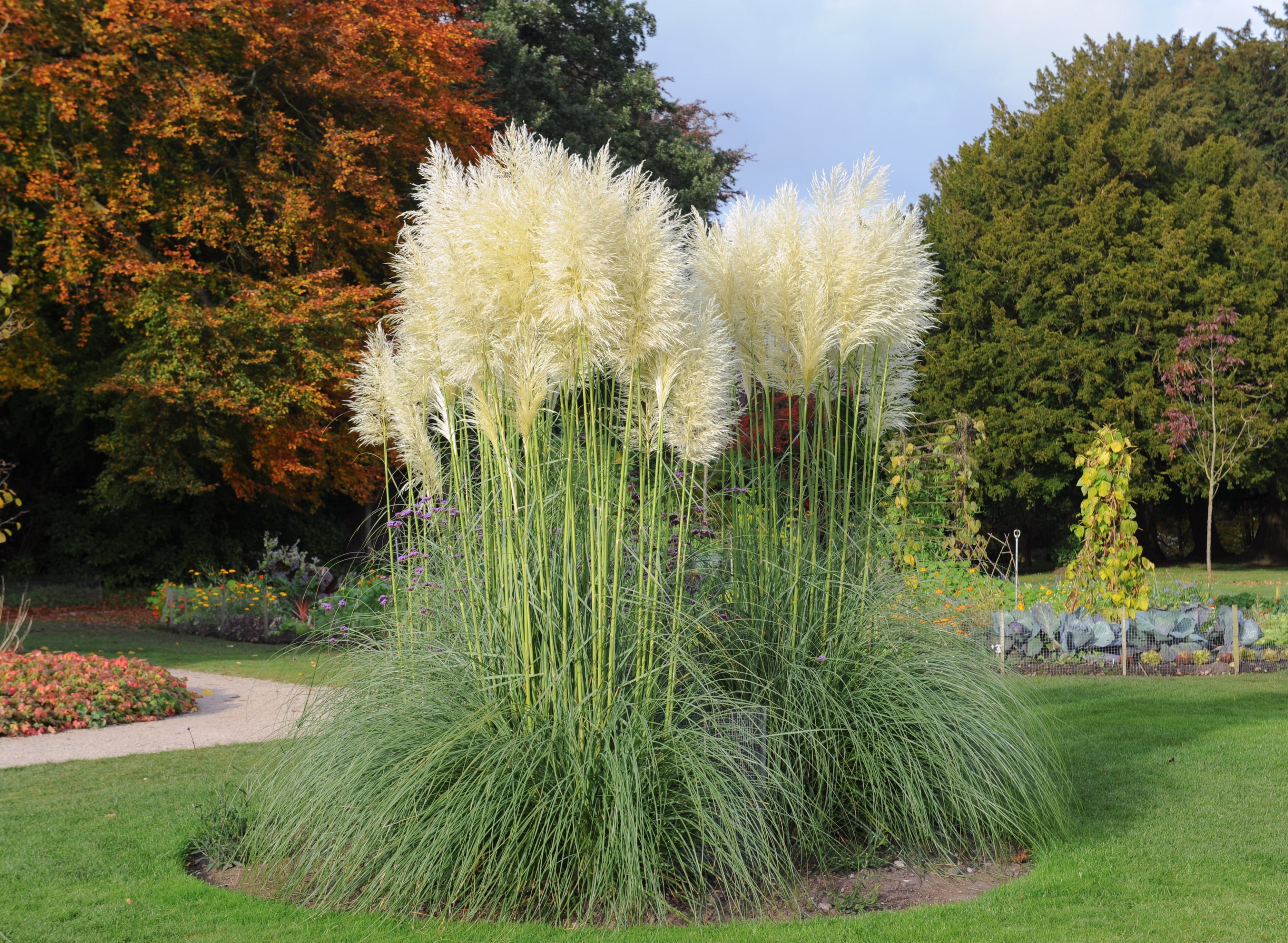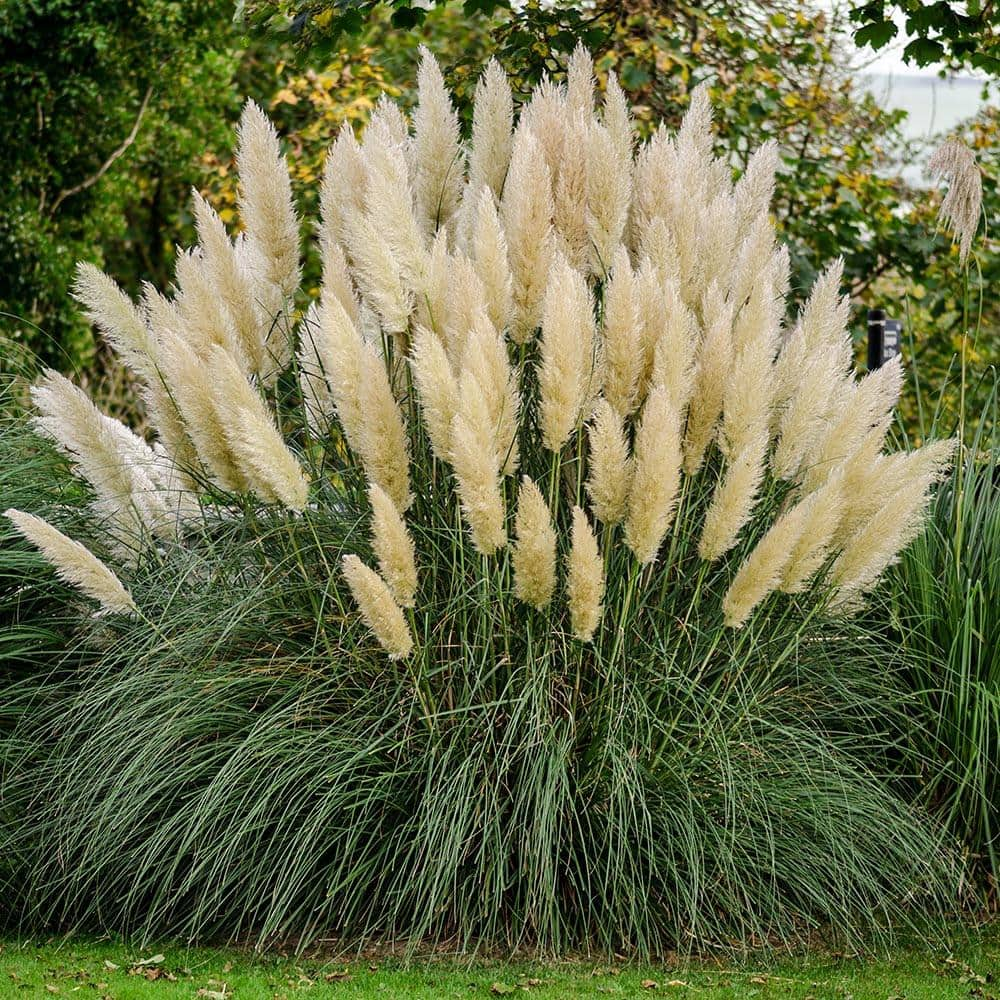The Fluffy Majesty of Pampas Grass: More Than Just a Pretty Plume
Ever seen those tall, feathery plumes swaying in the breeze and wondered what they are? Chances are, you’ve spotted pampas grass! This plant, with its dramatic presence, has become a popular choice for landscaping and even interior decor. But there’s more to this striking grass than just its good looks. Let’s dig into the nitty-gritty of pampas grass.
Where Does This Grass Come From Anyway?
Pampas grass, scientifically known as Cortaderia selloana, isn’t a native of the United States. Nope, it hails from way down south in South America, specifically the pampas regions of Argentina, Brazil, and Uruguay. These areas are vast, grassy plains, which explains why this plant thrives in open, sunny spots. It was brought over to other parts of the world as an ornamental plant, prized for its impressive size and those iconic plumes.
:max_bytes(150000):strip_icc()/GettyImages-973117528-2000-5d8f77739bba4badbbf5c065cc427120.jpg)
What Makes Pampas Grass So Darn Special?
The real showstopper with pampas grass is undoubtedly its feathery flower heads, or plumes. These can range in color from silvery-white to pinkish or even purplish hues, and they can grow to be quite large – sometimes up to two feet long! They typically appear in late summer and persist through the winter, adding texture and visual interest to the landscape even when everything else is looking a bit bare.
But it’s not just the plumes. The foliage of pampas grass is also quite striking. It forms large, dense clumps of long, narrow, and often sharp-edged leaves that can reach several feet in height. This combination of tall, arching leaves and the towering plumes creates a truly dramatic effect.
Growing Pampas Grass: What You Need to Know

If you’re thinking about adding pampas grass to your garden, there are a few things to keep in mind. First off, this is a plant that loves sunshine. It needs at least six hours of direct sunlight each day to really thrive and produce those beautiful plumes. It’s also fairly adaptable when it comes to soil, tolerating a range of soil types as long as they are well-draining. Soggy roots are a big no-no for pampas grass.
Once established, pampas grass is relatively low-maintenance. It’s drought-tolerant, meaning you won’t have to water it constantly, although it will appreciate occasional watering during long dry spells, especially when it’s young.
However, be aware that pampas grass can be a vigorous grower and can spread through its seeds. In some areas, it’s even considered invasive, outcompeting native plants. So, if you do plant it, it’s a good idea to be mindful of controlling its spread, perhaps by removing the plumes before they go to seed.
Pampas Grass in Landscaping and Beyond

Beyond its natural habitat, pampas grass has found its way into countless gardens and landscapes around the world. Its tall, architectural form makes it a fantastic focal point, and it can also be used as a screen or backdrop. The plumes are incredibly popular in floral arrangements, both fresh and dried, adding a touch of elegance and texture. You’ve probably seen them in vases, wreaths, and all sorts of decorative displays.
A Word of Caution: The Sharp Edges
While pampas grass is beautiful, it’s worth noting that the leaves can be quite sharp. It’s a good idea to wear gloves when handling the plant to avoid any accidental cuts. Also, be mindful of where you plant it, especially if you have kids or pets who might brush against it.
In Conclusion
Pampas grass is a truly captivating plant, bringing drama and beauty to any setting with its towering plumes and elegant foliage. While it requires plenty of sunshine and well-drained soil, its relatively low-maintenance nature once established makes it an appealing choice for many gardeners. Just remember to be aware of its potential to spread and the sharpness of its leaves. Whether you admire it swaying in a garden or see its plumes adorning a vase, pampas grass is a plant that definitely makes a statement.
Frequently Asked Questions About Pampas Grass
Is pampas grass hard to grow?
Generally, no. Once established, pampas grass is quite resilient and doesn’t require a lot of fuss. The main things it needs are plenty of sunlight and well-draining soil.
How big does pampas grass get?
Pampas grass can grow quite large! The foliage can reach heights of 6 to 10 feet, and the flower plumes can add another few feet on top of that. It also forms a substantial clump that can spread several feet wide.
When does pampas grass produce its plumes?
Pampas grass typically flowers in late summer to fall. The plumes will then often persist throughout the winter, adding interest to the dormant landscape.
Does pampas grass die back in the winter?
In colder climates, the foliage of pampas grass may turn brown and look a bit ragged over the winter. However, it is a perennial grass, meaning it will typically come back from its base in the spring. You can prune away the dead foliage in late winter or early spring to make way for new growth.
Is pampas grass bad for the environment?
Pampas Grass Plant
:max_bytes(150000):strip_icc()/GettyImages-973117528-2000-5d8f77739bba4badbbf5c065cc427120.jpg?ssl=1)